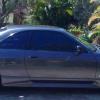Where Is The Best Place To Put A Bov On The Intercooler Piping ?
Announcements
-
Similar Content
-
Latest Posts
-
By Watermouse · Posted
Great interview on damper settings and coil selection by HPA https://www.facebook.com/HPAcademy/videos/30284693841175196/?fs=e&s=TIeQ9V&fs=e -
The values for HID colour are also defined ~ see https://www.legislation.gov.au/F2006L02732/latest/text ~ goto section 3.9 onwards ....
-
So, if the headlights' cutoff behaviour (angles, heights, etc) are not as per 6.2.6.1.1 without automatic levelling, then you have to have to have automatic** levelling. Also, if the headlight does not have the required markings, then neither automatic nor manual adjusters are going to be acceptable. That's because the base headlight itself does not meet the minimum requirement (which is the marking). ** with the option of manual levelling, if the headlight otherwise meets the same requirements as for the automatic case AND can be set to the "base" alignment at the headlight itself. So that's an additional requirement for the manual case. So, provided that the marking is on the headlight and there is a local manual adjustment back to "base" on the headlight, then yes, you could argue that they are code compliant. But if you are missing any single one of these things, then they are not. And unlike certain other standards that I work with, there does not seem to be scope to prepare a "fitness for purpose" report. Well, I guess there actually is. You might engage an automotive engineer to write a report stating that the lights meet the performance requirements of the standard even if they are missing, for example, the markings.
-
Vertical orientation 6.2.6.1.1. The initial downward inclination of the cut off of the dipped-beam to be set in the unladen vehicle state with one person in the driver's seat shall be specified within an accuracy of 0.1 per cent by the manufacturer and indicated in a clearly legible and indelible manner on each vehicle close to either headlamp or the manufacturer's plate by the symbol shown in Annex 7. The value of this indicated downward inclination shall be defined in accordance with paragraph 6.2.6.1.2. 6.2.6.1.2. Depending on the mounting height in metres (h) of the lower edge of the apparent surface in the direction of the reference axis of the dipped beam headlamp, measured on the unladen vehicles, the vertical inclination of the cut off of the dipped- beam shall, under all the static conditions of Annex 5, remain between the following limits and the initial aiming shall have the following values: h < 0.8 Limits: between 0.5 per cent and 2.5 per cent Initial aiming: between 1.0 per cent and 1.5 per cent 0.8 < h < 1.0 Limits: between 0.5 per cent and 2.5 per cent Initial aiming: between 1.0 per cent and 1.5 per cent Or, at the discretion of the manufacturer, Limits: between 1.0 per cent and 3.0 per cent Initial aiming: between 1.5 per cent and 2.0 per cent The application for the vehicle type approval shall, in this case, contain information as to which of the two alternatives is to be used. h > 1.0 Limits: between 1.0 per cent and 3.0 per cent Initial aiming: between 1.5 per cent and 2.0 per cent The above limits and the initial aiming values are summarized in the diagram below. For category N3G (off-road) vehicles where the headlamps exceed a height of 1,200 mm, the limits for the vertical inclination of the cut-off shall be between: -1.5 per cent and -3.5 per cent. The initial aim shall be set between: -2 per cent and -2.5 per cent.
-


Recommended Posts
Create an account or sign in to comment
You need to be a member in order to leave a comment
Create an account
Sign up for a new account in our community. It's easy!
Register a new accountSign in
Already have an account? Sign in here.
Sign In Now